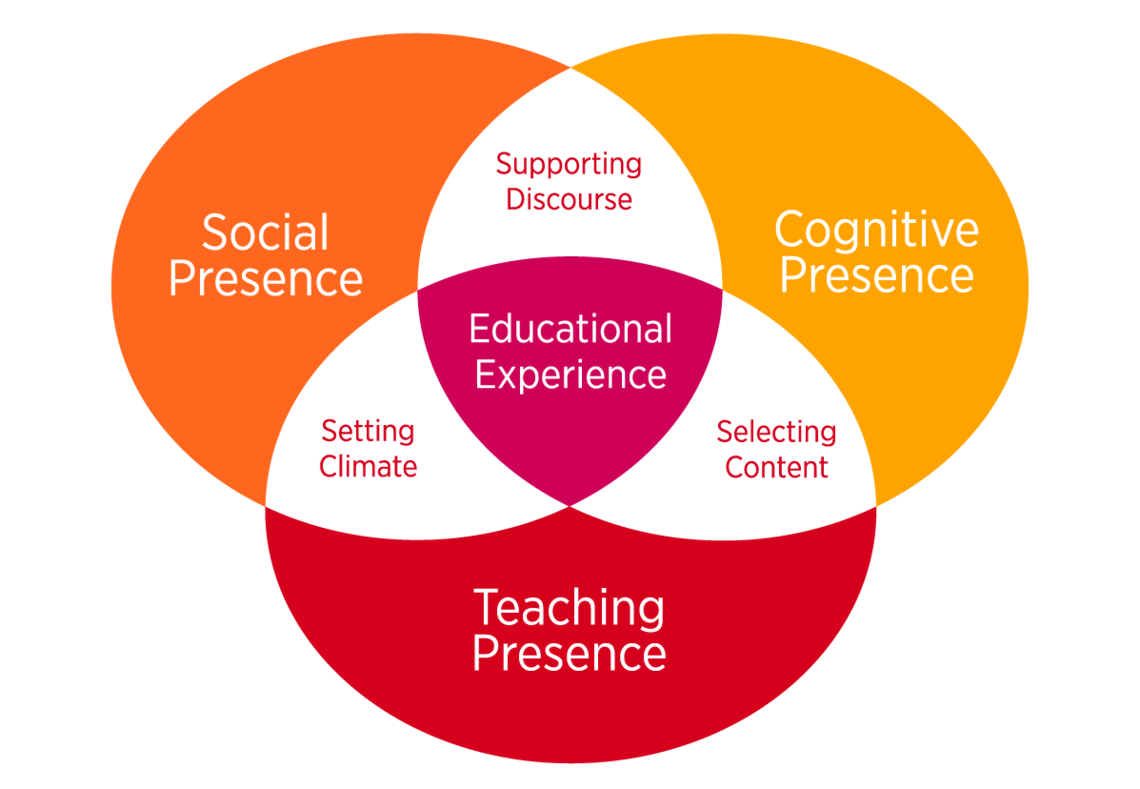
Lesson 2: Foster an inclusive and accessible learning environment
Creating a sense of community in online courses
The Community of Inquiry (CoI) model developed by Garrison & Vaughan (2008) provides a research informed framework to guide the design of an online course by considering the relationships between the instructor, students and course content. The model has three main themes:
The ability for students to connect with the online community (ie. Class), to communicate in a trusting environment, to voice their thoughts and opinions, and to develop their own identity.
The role the instructor plays in designing and facilitating the online course that fosters a meaningful learning experience, to maintain open communication with students, and to be an active member of the online community.
How students connect with the content and each other to construct knowledge, meaning, and to reflect on their own experiences and learning.
Community of Inquiry Model

Developed by Garrison & Vaughan (2008)
How to create community in your online course
Lesson checklist
-
Conceptualize the Community of Inquiry Model
-
Apply strategies to create an inclusive learning community
-
Explain the basic principles of Universal Design for Learning
-
Apply strategies to make your course more accessible
References
Garrison, D. R. & Vaughan, N. D. (2008). Blended Learning in Higher Education: Framework, principles and guidelines. San Francisco: Jossey-Bass.



